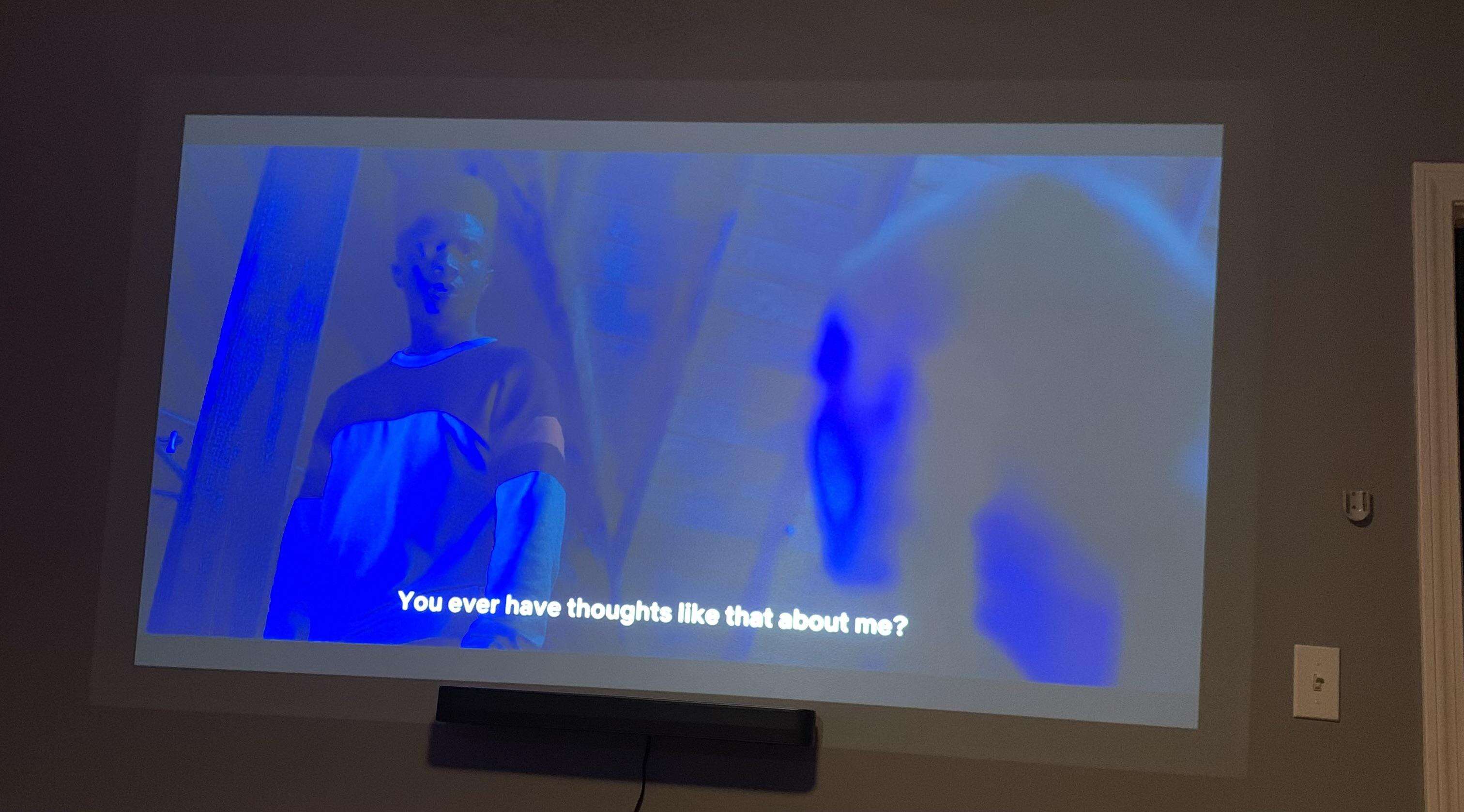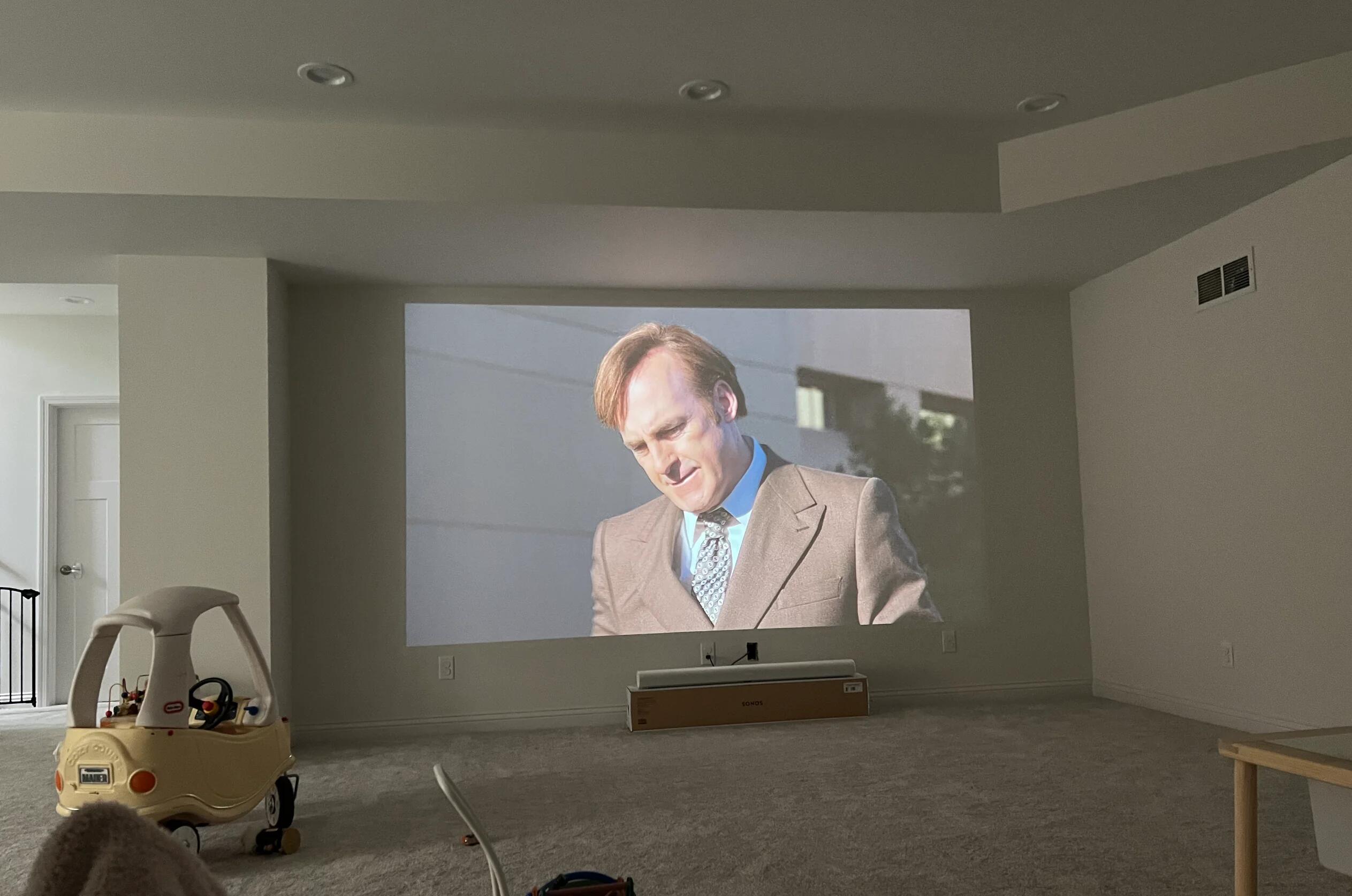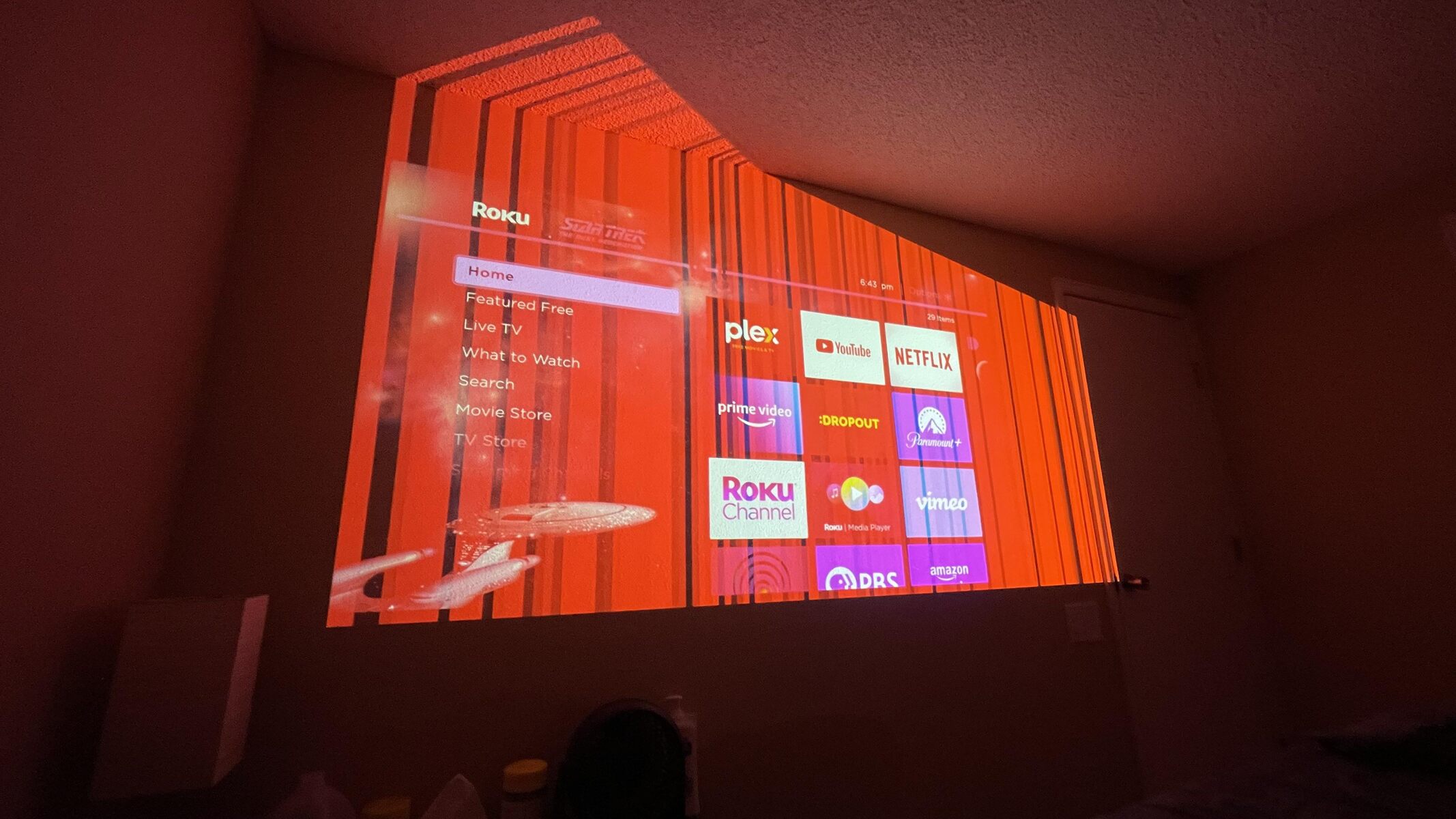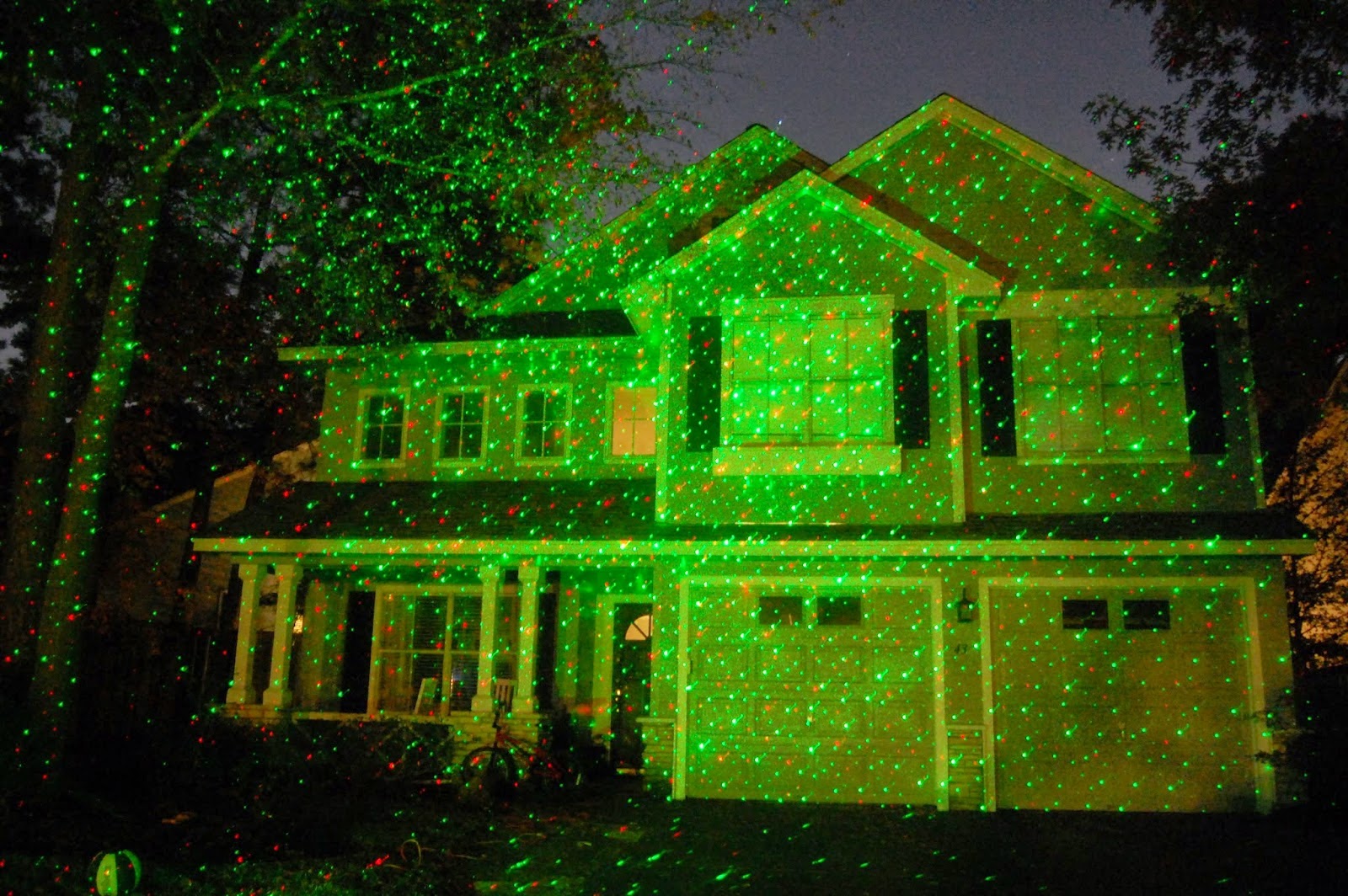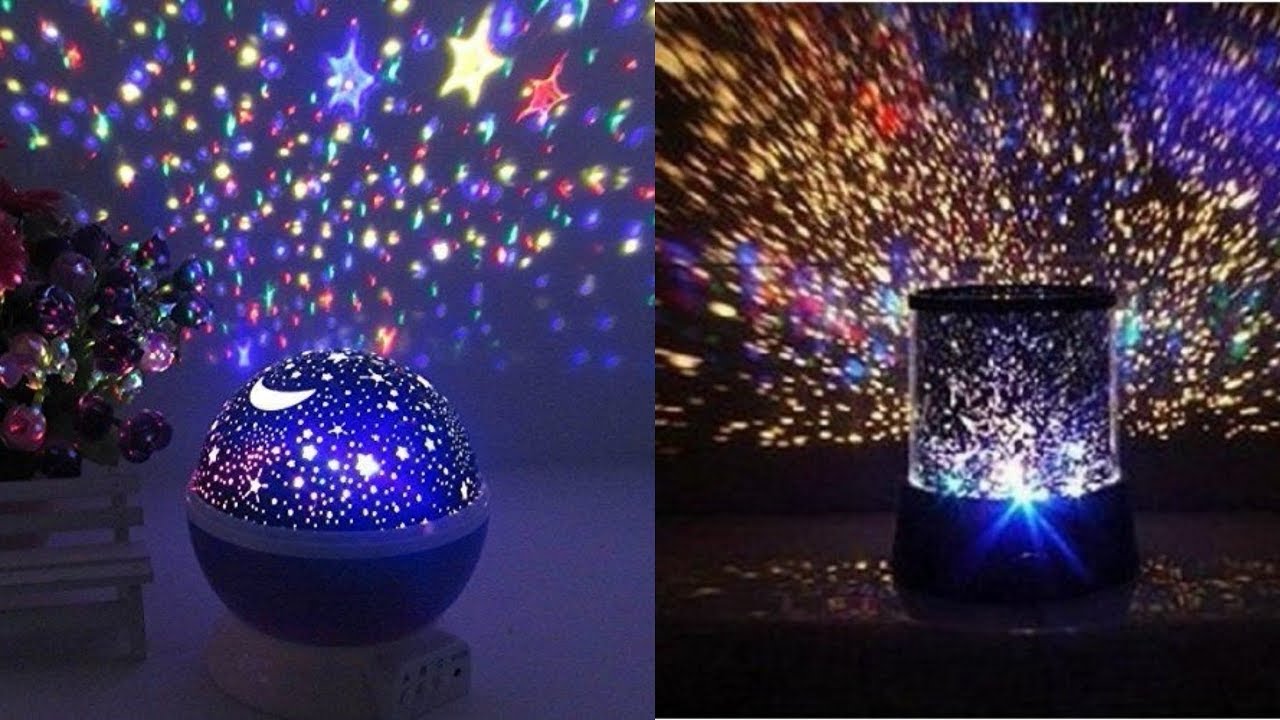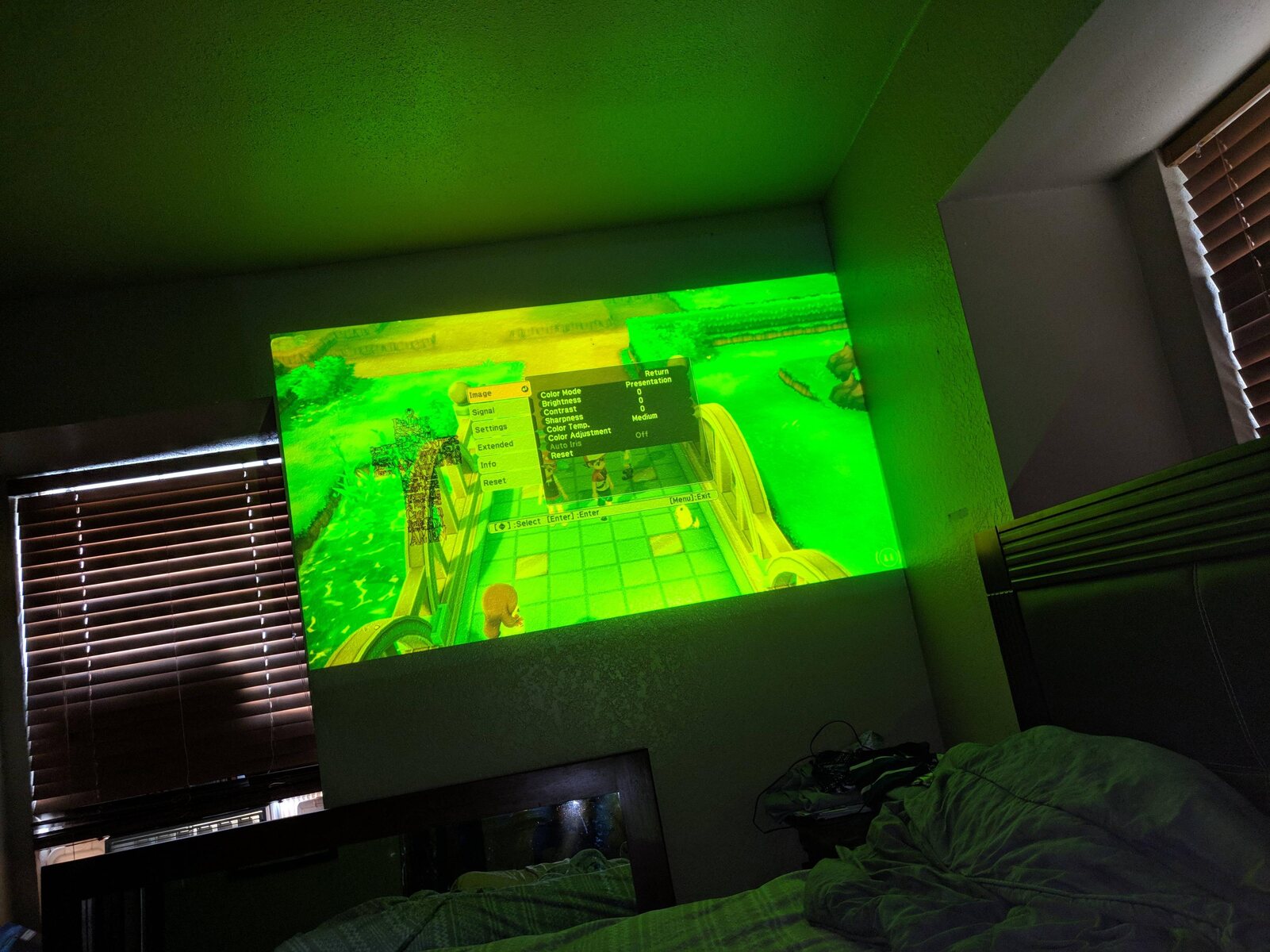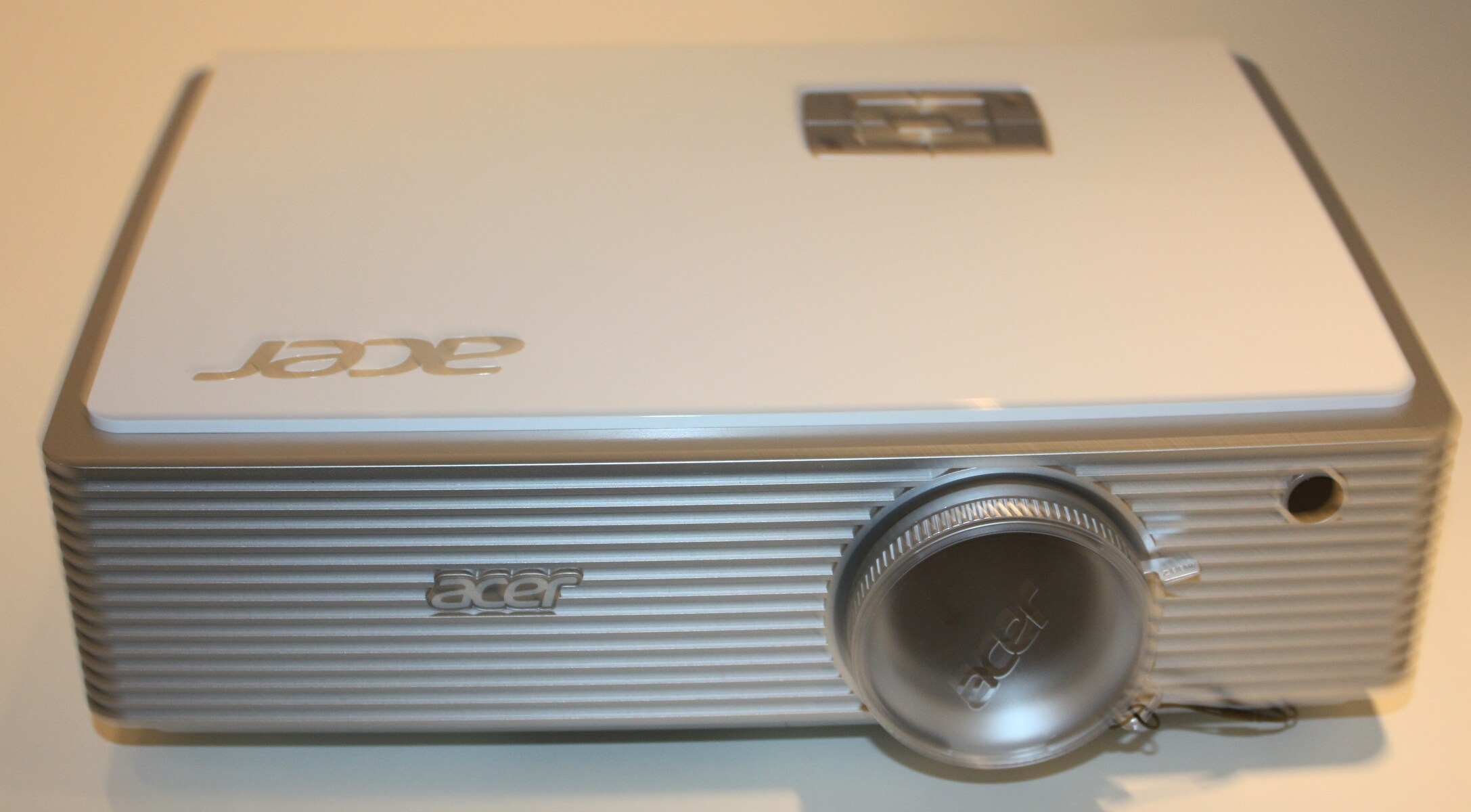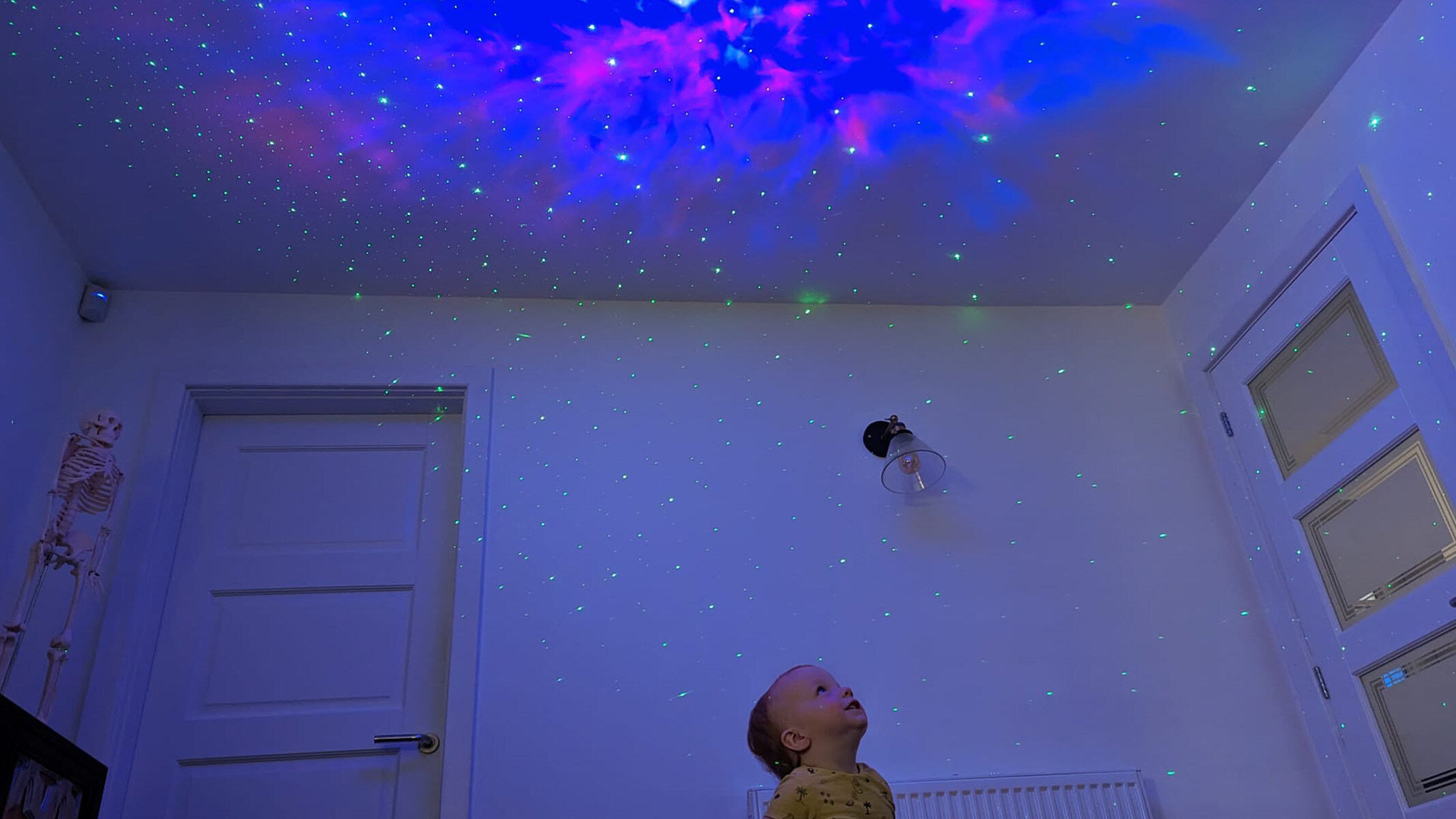Introduction
A projector is a valuable tool for presentations, movie nights, and gaming, but encountering unexpected issues can be frustrating. One common problem that users may encounter is a projector displaying a blue image. This can be a perplexing issue, as it disrupts the color accuracy and overall viewing experience. Understanding the possible causes behind this blue display is essential in finding a resolution.
When a projector shows a blue image, it means that the primary color displayed is predominantly blue. The color reproduction in projectors is achieved through a component called the color wheel. It consists of different color segments that rotate rapidly to produce the desired colors on the projected image. To address the blue display issue, it is important to explore the potential causes and perform troubleshooting steps.
In this article, we will delve into the possible reasons why your projector is showing a blue image. We will examine common issues such as input source problems, faulty cable connections, incorrect color settings, lamp life and aging, and projector lens problems. By understanding these causes, you can identify the specific issue affecting your projector and take appropriate steps to resolve it.
Understanding the Color Wheel
Before delving into the causes of a blue display on a projector, it is essential to have a basic understanding of how the color wheel works. The color wheel is a crucial component in projectors that enables them to produce a wide range of colors.
The color wheel typically consists of red, green, and blue (RGB) segments, along with other secondary colors. These segments are arranged in a circular pattern and rotate rapidly as the projector operates. The combination of these colors results in the various hues and shades seen on the projected image.
When you send a signal to the projector, it interprets the color information and determines which segments of the color wheel to activate. By adjusting the speed and synchronization of these rotating segments, the projector can recreate the desired color on the screen.
Understanding how the color wheel operates is crucial because it helps identify potential issues when a projector displays a dominant blue image. An imbalance in the color wheel can lead to the overuse of the blue segment, causing the projected image to appear primarily blue.
It’s also worth noting that different projectors may have variations in their color wheel configurations. Some projectors may employ a different color model, such as RGBRGB, which uses alternating red, green, and blue segments. These differences can impact the color reproduction and contribute to a blue display issue.
Now that we have an understanding of the color wheel and its role in color reproduction, let’s explore the various factors that can cause a projector to show a blue image. By identifying these factors, you can undertake the necessary troubleshooting steps to address the issue and restore accurate color representation on your projector.
Possible Causes of a Blue Display
When your projector is displaying a blue image, there can be several factors contributing to this issue. By understanding these potential causes, you can effectively troubleshoot and resolve the problem. Let’s explore some of the common culprits behind a blue display:
1. Input Source Issue: One possible cause is an issue with the input source. Check if the device you’re connecting to the projector, such as a laptop or DVD player, is set to output the correct colors. Ensure that the input source is not set to display only blue output or that there are no image processing settings altering the color balance.
2. Faulty Cable Connection: A faulty or loose cable connection can result in an incorrect color output. Ensure that the cables connecting the projector to the input source are securely plugged in and undamaged. Consider trying a different cable to rule out any potential cable-related issues.
3. Incorrect Color Settings: It’s possible that the color settings on the projector have been inadvertently adjusted. Navigate through the projector’s menu options to access the color settings and ensure they are properly calibrated. Resetting to default settings is also worth trying if you’ve made any previous adjustments.
4. Lamp Life and Aging: If your projector lamp is nearing the end of its lifespan or has already exceeded it, it can affect color accuracy. As the lamp deteriorates, it may emit a bluish hue, resulting in the blue display. Refer to your projector’s manual to determine the lifespan of the lamp and consider replacing it if necessary.
5. Projector Lens Problems: Issues with the projector lens, such as dust accumulation or misalignment, can impact color reproduction. Inspect the lens for any dirt or debris and clean it meticulously using appropriate cleaning tools. If the lens appears damaged or misaligned, it may require professional assistance to rectify the issue.
These are some of the potential causes behind a projector displaying a blue image. By considering these factors and performing the necessary troubleshooting steps, you can work towards resolving the issue and restoring accurate color output on your projector.
Input Source Issue
An input source issue is one of the potential causes behind a projector displaying a blue image. When your projector is connected to a device like a laptop, DVD player, or gaming console, it relies on the input source to provide the correct color information for display. If there is an issue with the settings or configuration of the input source, it can result in a dominant blue image on the projector.
Here are some steps to troubleshoot an input source issue:
1. Check the output settings: Ensure that the output settings of the device connected to the projector are configured correctly. Sometimes, the device may have a specific display mode or color profile selected that is causing the blue display. Navigate through the display settings on the device and check if there is an option to reset the color output to default.
2. Disable image processing settings: Some devices have image processing settings that can alter the color balance or apply color filters to the output. These settings may cause the projector to display a predominantly blue image. Disable any image processing or color enhancement settings on the connected device and see if it resolves the issue.
3. Try a different device: Connect a different device to the projector and see if the blue display issue persists. If the problem only occurs with one particular device, it indicates that the issue lies in the settings or configuration of that device. You can then focus on troubleshooting that specific device to resolve the issue.
4. Test with another cable: A faulty cable can also contribute to incorrect color output. To rule out any cable-related issues, try using a different cable to connect the input source to the projector. Ensure that the replacement cable is of high quality and appropriate for the specific input/output ports being used.
By addressing any input source issues and ensuring the correct color settings and configurations, you can eliminate one potential cause of a blue display on your projector. If the issue persists, it’s time to explore other possible causes and perform further troubleshooting steps.
Faulty Cable Connection
A faulty cable connection can be a culprit when a projector displays a blue image. If the cable connecting the input source device to the projector is damaged, loose, or not functioning properly, it can result in an incorrect color output. Here are some steps to troubleshoot and address faulty cable connection issues:
1. Check cable integrity: Inspect the cable for any visible signs of damage, such as frayed or bent connectors, kinks, or cuts. If you notice any physical damage, it’s advisable to replace the cable with a new one. Even minor damage can disrupt the signal transmission and affect color accuracy.
2. Secure connections: Ensure that the cable is securely plugged into both the input source device and the projector. Sometimes, a loose connection can cause a loss in signal quality and result in incorrect color output. Remove and reinsert the cable on both ends to ensure a tight and secure connection.
3. Try a different cable: If there are no visible signs of damage, try using a different cable to connect the input source device to the projector. This helps verify whether the issue is with the original cable or not. Use a high-quality cable that matches the input/output ports of the devices you are connecting.
4. Test with another input source: Connect a different input source device to the projector using the cable in question. If the blue display issue persists with the new input source, it indicates that the problem lies with the cable itself. In such cases, replacing the cable is the recommended solution.
5. Consider cable length and quality: The length and quality of the cable can impact signal quality and color transmission. Longer cables may be more prone to signal degradation, leading to color inaccuracies. Ensure that you are using a cable of the appropriate length for your setup. Additionally, using high-quality cables with good shielding can help minimize signal interference and improve color integrity.
By addressing faulty cable connection issues, you can eliminate one potential cause of a blue display on your projector. Ensure that the cable is in good condition, securely connected, and compatible with the input/output ports. If the problem persists, it’s time to explore other possible causes and continue troubleshooting.
Incorrect Color Settings
Incorrect color settings on the projector can also contribute to a blue display issue. Sometimes, the color settings may have been inadvertently adjusted, resulting in a dominant blue image. Here are some steps to troubleshoot and rectify incorrect color settings:
1. Access the color settings menu: Consult your projector’s user manual to locate the color settings menu. This can usually be accessed through the projector’s on-screen display (OSD) menu or via a dedicated button on the remote control. Navigate to the color settings section.
2. Reset to default: If you have made any prior adjustments to the color settings, consider resetting them to their default values. This will ensure that any incorrect configurations are eliminated. Look for an option such as “Reset” or “Restore Default Settings” and confirm the action.
3. Adjust color temperature: The color temperature setting determines the overall warmth or coolness of the projected image. If the color temperature is set too high or too low, it can result in inaccurate color reproduction. Experiment with different color temperature settings to find the one that provides the most balanced and natural colors.
4. Calibrate color balance: Some projectors offer the option to manually calibrate the color balance. This allows you to adjust the levels of red, green, and blue to achieve accurate color representation. Use the projector’s color balance controls to fine-tune the color output until the blue dominance is corrected.
5. Disable color enhancements: Projectors may have built-in features like color enhancement or dynamic picture modes that can alter the color balance. Disable these features to ensure that the projector is displaying the colors as intended without any artificial enhancements.
6. Test different picture modes: Many projectors offer multiple picture modes, such as Cinema, Game, or Presentation. These modes are pre-configured settings optimized for specific content. Try switching to a different picture mode to see if it improves the color accuracy. Select a mode that is suitable for the content you are projecting.
By accessing the color settings menu on your projector and making the necessary adjustments, you can potentially rectify incorrect color settings and resolve the blue display issue. Remember to refer to your projector’s user manual for specific instructions related to color settings and calibration.
Lamp Life and Aging
The lamp used in projectors has a limited lifespan, and as it ages, it can affect color accuracy. When the lamp is nearing the end of its life or has already exceeded it, it may emit a bluish hue, causing the projector to display a predominantly blue image. Here’s how you can address lamp life and aging issues:
1. Check the lamp hours: Consult your projector’s user manual or settings menu to determine the lamp hour usage. Typically, projectors have a lamp hour counter that keeps track of the lamp’s usage. If the lamp has been used for an extended period or has exceeded its recommended lifespan, it may be time for a replacement.
2. Replace the lamp: If the lamp’s usage indicates that it has reached the end of its lifespan, it’s advisable to replace it. Purchase a genuine replacement lamp from a reputable source to ensure compatibility and quality. Follow the instructions provided in the user manual for safe and proper lamp replacement.
3. Consider lamp brightness mode: Some projectors offer different lamp brightness modes, such as high or eco mode. Using the high brightness mode can contribute to faster lamp aging. Consider switching to eco mode, which reduces the lamp’s intensity and extends its lifespan. However, keep in mind that eco mode may reduce the projector’s overall brightness.
4. Clean the projector’s air vents: Adequate airflow is crucial for lamp longevity. Over time, dust and debris can accumulate in the projector’s air vents, obstructing airflow and causing the lamp to overheat. Regularly clean the projector’s air vents using a soft brush or compressed air to ensure optimal ventilation and prolong the lamp’s life.
5. Allow the projector to cool down: After each use, allow the projector to cool down properly instead of shutting it down immediately. This helps prevent thermal stress on the lamp and extends its lifespan. Follow the manufacturer’s guidelines on cooldown periods before turning off the projector.
By keeping track of the lamp hour usage and replacing the lamp when necessary, you can address lamp aging issues and improve color accuracy on your projector. Additionally, ensuring proper ventilation and cooling will contribute to the lamp’s longevity, maximizing its lifespan for optimal performance.
Projector Lens Problems
Issues with the projector lens can also lead to a blue display problem. The lens is responsible for focusing and projecting the image onto the screen, and any problems with it can affect color reproduction. Here are some common lens-related issues and steps to address them:
1. Dust and debris: Dust particles and debris can accumulate on the projector lens over time, leading to reduced image clarity and color accuracy. Inspect the lens for any visible dirt or debris and clean it carefully using a lens cleaning solution and a soft, lint-free cloth. Be gentle to avoid scratching the lens surface.
2. Misalignment: If the projector lens is misaligned, it can cause distortions in the image and impact color accuracy. Consult your projector’s user manual for instructions on adjusting the lens alignment. Follow the provided guidelines to properly align the lens and ensure that it is projecting a clear, sharp image.
3. Lens scratches: Scratches on the lens can obstruct the light path, leading to distorted and uneven color reproduction. Examine the lens for any noticeable scratches. If you find scratches, consider contacting the manufacturer or a professional technician to determine if the lens needs repair or replacement.
4. Condensation: If the projector lens experiences sudden temperature changes, condensation may form on its surface. This can impact image quality and color accuracy. To address this issue, allow the projector to acclimate to the room temperature before use, and avoid exposing it to extreme temperature variations.
5. Lens quality: The quality of the projector lens can also affect color reproduction. Higher-quality lenses typically produce more accurate colors and sharper images. If you suspect that the lens quality is inadequate or causing color issues, you may need to consider upgrading to a projector with a better lens or consult with a professional for further advice.
By addressing lens-related issues, such as cleaning, alignment, and assessing lens quality, you can improve color accuracy and minimize the occurrence of a blue display on your projector. Proper care and maintenance of the lens will ensure clear, vibrant, and accurate color reproduction on your projected images.
Troubleshooting Steps
When you encounter a blue display issue on your projector, it’s important to go through a series of troubleshooting steps to identify and address the underlying problem. Here are some steps you can take to troubleshoot and resolve the issue:
1. Check the input source: Ensure that the input source device, such as a laptop or DVD player, is outputting the correct colors. Verify that the output settings are not set to display only blue or that there are no image processing settings altering the color balance.
2. Inspect the cable connections: Ensure that the cable connecting the input source device to the projector is securely plugged in and undamaged. Consider trying a different cable to rule out any potential cable-related issues.
3. Adjust color settings: Navigate through the projector’s menu options to access the color settings. Ensure that the color settings are properly calibrated and consider resetting them to default if you’ve made any previous adjustments.
4. Replace the lamp: If the lamp in your projector is nearing the end of its life or has exceeded it, consider replacing it. Refer to your projector’s manual to determine the lifespan of the lamp and follow the instructions provided for safe lamp replacement.
5. Clean or replace the projector lens: Inspect the projector lens for any dust, debris, or scratches. Clean the lens carefully using a lens cleaning solution and a soft cloth. If the lens appears damaged or misaligned, it may require professional assistance to rectify the issue.
By going through these troubleshooting steps, you can isolate and address the specific cause of the blue display issue on your projector. Remember to follow the instructions provided in your projector’s manual and seek professional help if necessary.
Check the Input Source
One of the first troubleshooting steps when encountering a blue display issue on your projector is to check the input source. The input source refers to the device that is connected to the projector and provides the content to be displayed. Sometimes, incorrect settings or configurations on the input source can lead to a predominantly blue image. Here are some steps to check the input source:
1. Verify output settings: Ensure that the output settings of the device connected to the projector are correctly configured. Check if there is an option to reset the color output to default. Make sure that the device is not set to display only blue output or that there are no image processing settings altering the color balance.
2. Image processing settings: Some devices have image processing settings that can impact the color balance or apply color filters to the output. These settings may cause the projector to display a predominantly blue image. Disable any image processing or color enhancement settings on the connected device and see if it resolves the issue.
3. Try a different device: If possible, connect a different device to the projector and observe if the blue display issue persists. This will help determine if the problem lies with the specific device or with the projector itself. If the problem occurs only with one particular device, focus on troubleshooting that device to resolve the issue.
4. Test different content: Play different types of content on the input source device and observe if the blue display issue persists across all content or if it is specific to certain files or applications. This can help determine if the issue is related to the content being displayed or if it is consistent across all sources.
By checking the input source and verifying its output settings, image processing settings, and trying a different device or content, you can identify if the blue display issue is originating from the input source itself. If the issue persists, continue with the other troubleshooting steps to diagnose and resolve the problem.
Inspect the Cable Connections
Another important step in troubleshooting a blue display issue on your projector is to inspect the cable connections. A faulty or loose cable connection can result in an incorrect color output. Here are some steps to inspect and address cable connection issues:
1. Visual inspection: Begin by visually inspecting the cable connecting the input source device to the projector. Look for any signs of physical damage, such as frayed or bent connectors, kinks, or cuts. If you notice any visible damage, it’s advisable to replace the cable with a new one.
2. Secure connections: Ensure that the cable is securely plugged into both the input source device and the projector. Sometimes, a loose connection can cause a loss in signal quality and result in incorrect color output. Remove and reinsert the cable on both ends to ensure a tight and secure connection.
3. Try a different cable: If there are no visible signs of damage, try using a different cable to connect the input source device to the projector. This helps verify whether the issue is with the original cable or not. Use a high-quality cable that matches the input/output ports of the devices you are connecting.
4. Test with another input source: Connect a different input source device to the projector using the cable in question. If the blue display issue persists with the new input source, it indicates that the problem lies with the cable itself. In such cases, replacing the cable is the recommended solution.
5. Consider cable length and quality: The length and quality of the cable can also impact signal quality and color transmission. Longer cables may be more prone to signal degradation, leading to color inaccuracies. Ensure that you are using a cable of the appropriate length for your setup. Additionally, using high-quality cables with good shielding can help minimize signal interference and improve color integrity.
By inspecting the cable connections, ensuring they are secure and undamaged, trying a different cable if needed, and considering cable length and quality, you can eliminate or address any cable-related issues that may be causing the blue display problem. Proper cable connections are essential for maintaining signal integrity and accurate color output on your projector.
Adjust Color Settings
Adjusting the color settings on your projector is an important troubleshooting step when dealing with a blue display issue. Sometimes, incorrect or misconfigured color settings can cause the projector to display a predominantly blue image. Here are some steps to help you adjust the color settings:
1. Access the color settings menu: Refer to your projector’s user manual to locate and access the color settings menu. Typically, you can access this menu through the projector’s on-screen display (OSD) or via a dedicated button on the remote control.
2. Reset to default: If you have made any previous adjustments to the color settings, consider resetting them to their default values. This will help eliminate any incorrect configurations that may have contributed to the blue display issue. Look for an option such as “Reset” or “Restore Default Settings” and confirm the action.
3. Adjust color temperature: The color temperature setting determines the overall warmth or coolness of the projected image. If the color temperature is set too high or too low, it can result in inaccurate color reproduction. Experiment with different color temperature settings to find the one that provides the most balanced and natural colors.
4. Calibrate color balance: Some projectors offer the option to manually calibrate the color balance. This allows you to adjust the levels of red, green, and blue to achieve accurate color representation. Use the projector’s color balance controls to fine-tune the color output until the blue dominance is corrected.
5. Disable color enhancements: Projectors often come with built-in features like color enhancement or dynamic picture modes that can alter the color balance. Disabling these features ensures that the projector is displaying the colors as intended without any artificial enhancements.
6. Test different picture modes: Many projectors offer multiple picture modes such as Cinema, Game, or Presentation. These modes are pre-configured settings optimized for specific content. Try switching to a different picture mode to see if it improves color accuracy. Select a mode that is suitable for the content you are projecting.
By accessing the color settings menu, resetting to default if necessary, adjusting the color temperature and balance, disabling color enhancements, and trying different picture modes, you can fine-tune the color settings of your projector to address the blue display issue. It’s important to refer to your projector’s user manual for specific instructions on accessing and adjusting the color settings.
Replace the Lamp
When a projector displays a blue image, one potential cause could be the lamp reaching the end of its lifespan or surpassing it. Over time, the lamp’s performance deteriorates, and it may emit a bluish hue, leading to color inaccuracies. Here are steps to replace the lamp:
1. Check lamp hours: Consult your projector’s user manual or settings menu to determine the lamp hour usage. Projectors typically have a lamp hour counter that keeps track of the lamp’s usage. If the lamp has been used for an extended period or exceeds its recommended lifespan, it may be time for a replacement.
2. Purchase a new lamp: Look for a genuine replacement lamp from a reputable source. Ensure that the replacement is compatible with your specific projector model. Check your projector’s user manual or manufacturer’s website for information on compatible replacement lamps.
3. Power off and cool down: Before replacing the lamp, turn off the projector and allow it to cool down. The lamp can become extremely hot during operation, so it’s crucial to let it cool down to a safe temperature before proceeding with the replacement.
4. Access the lamp compartment: Consult your projector’s user manual to locate the lamp compartment. This is usually accessible from the bottom or side of the projector. Some projectors may require removing a panel or a screw to access the lamp compartment.
5. Remove the old lamp: Carefully follow the instructions provided in your projector’s user manual to remove the old lamp. Typically, this involves releasing the lamp by detaching the lamp cover or unscrewing it, then gently removing the lamp from its housing. Avoid touching the lamp glass to prevent any oil or residue from affecting its performance.
6. Install the new lamp: Insert the new lamp into the projector’s lamp compartment, ensuring it is aligned correctly. Follow the instructions in your user manual to secure the lamp in place. Double-check that the lamp cover is properly closed and securely fastened.
7. Reset lamp hours: After replacing the lamp, it is often necessary to reset the lamp hour counter in your projector’s settings menu. This ensures accurate tracking of the lamp usage and allows the projector to monitor the lamp’s performance accurately.
By replacing the lamp according to the manufacturer’s instructions and resetting the lamp hours, you can address the blue display issue caused by a deteriorating lamp. A new lamp will provide improved color accuracy and extend the life of your projector.
Clean or Replace the Projector Lens
The projector lens plays a crucial role in focusing and projecting the image onto the screen accurately. Any issues with the lens can affect color reproduction and result in a blue display. Here are steps to clean or replace the projector lens:
1. Inspect the lens: Begin by inspecting the projector lens for any visible dust, dirt, or smudges. These particles can obstruct the light path and impact image quality. Use a flashlight to see if there are any areas that require cleaning or if the lens shows signs of damage like scratches.
2. Cleaning the lens: If the lens appears dirty or dusty, clean it using a soft, lint-free cloth. Start by using a blower or brush to remove loose particles. Then, apply a small amount of lens cleaning solution to the cloth and gently wipe the lens in a circular motion. Avoid applying excessive pressure to prevent scratching the lens surface.
3. Realigning the lens: If the projector lens appears misaligned, consult the projector’s user manual for instructions on how to realign it. Follow the provided guidelines to ensure that the lens is in the correct position for optimal image projection. Incorrect lens alignment can contribute to color inaccuracies.
4. Assessing lens damage: If the lens shows signs of significant scratches or damage that cleaning cannot resolve, it may be necessary to replace the lens. Contact the projector manufacturer or a professional technician to inquire about lens replacement options and procedures.
5. Professional cleaning or repairs: In some cases, the lens may require professional cleaning or repairs. If you are uncomfortable cleaning the lens yourself or the issue persists after cleaning, seek assistance from a professional technician who specializes in projector maintenance and repairs.
6. Proper lens handling: If you need to remove the lens for cleaning or replacement, handle it with care. Avoid touching the lens glass directly to prevent oil or residue from transferring onto the surface. Follow the manufacturer’s instructions for safe lens removal and installation.
By regularly cleaning and maintaining the projector lens, you can ensure optimal image quality and color accuracy. If the lens shows signs of significant damage or cleaning does not resolve the blue display issue, consider consulting a professional for further assessment and potential lens replacement.
Conclusion
Encountering a blue display issue on your projector can be frustrating, but by understanding the possible causes and following the appropriate troubleshooting steps, you can effectively address the problem. In this article, we explored various factors that can contribute to a blue display, including input source issues, faulty cable connections, incorrect color settings, lamp life and aging, and projector lens problems.
By checking the input source settings and verifying cable connections, you can rule out any issues related to the device or the cables. Adjusting the color settings on the projector ensures that the colors are calibrated accurately, while replacing a lamp nearing the end of its life can significantly improve color accuracy and eliminate blue dominance. Cleaning or replacing the projector lens helps maintain optimal image quality by ensuring clarity and preventing color distortions.
When troubleshooting, it is important to refer to your projector’s user manual for specific instructions and guidelines. Following the recommended steps will ensure that you perform the necessary actions safely and effectively.
Remember that each projector may have unique features and settings, so it’s essential to familiarize yourself with your specific model’s functionalities. By regularly maintaining your projector and addressing any issues promptly, you can prolong its lifespan and enjoy vibrant, accurate color reproduction for all your projection needs.
If the troubleshooting steps outlined in this article do not resolve the blue display issue, it is advisable to consult a professional technician or contact the manufacturer’s customer support for further assistance. They can provide guidance specific to your projector model and help diagnose any underlying issues that may require advanced technical expertise.
By taking a systematic approach to troubleshooting and addressing the possible causes of a blue display, you can restore optimal color performance on your projector and enjoy the best possible viewing experience.







